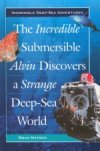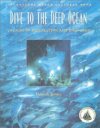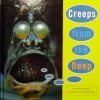Explorer of the Extreme Deep Additional Information
Share this:
- Share via email (Opens in new window) Email
- Click to share on Facebook (Opens in new window) Facebook
- Click to share on X (Opens in new window) X
- Click to share on Pinterest (Opens in new window) Pinterest
- Click to share on Reddit (Opens in new window) Reddit
- Share to Google Classroom (Opens in new window) Google Classroom
- Click to print (Opens in new window) Print
You can learn more about the deep-sea submersible Alvin at www.whoi.edu/marops/vehicles/alvin/ (Woods Hole Oceanographic Institution), oceanexplorer.noaa.gov/technology/subs/alvin/alvin.html (National Oceanic and Atmospheric Administration), and www.ocean.udel.edu/extreme2001/mission/alvin/ (University of Delaware).
To learn more about ocean-going submersibles, go to www.onr.navy.mil/focus/ocean/vessels/submersibles1.htm (Office of Naval Research).
Information about the Challenger Deep can be found at www.extremescience.com/DeepestOcean.htm(Extreme Science).
You can learn more about the discovery of hydrothermal vents at oceanexplorer.noaa.gov/explorations/02galapagos/galapagos.html (National Oceanic and Atmospheric Administration).
Information about black smokers and hydrothermal vents can be found at www.amnh.org/nationalcenter/expeditions/blacksmokers/ (American Museum of Natural History).
Ramsayer, Kate. 2004. Deep drilling at sea. Science News for Kids (Sept. 8). Available at http://www.sciencenewsforkids.org/articles/20040908/Feature1.asp.
Sohn, Emily. 2004. The pressure of scuba diving. Science News for Kids (June 23).
Available at http://www.sciencenewsforkids.org/articles/20040623/Feature1.asp.
______. 2003. Undersea vent system active for ages. Science News for Kids (July 30).
Available at http://www.sciencenewsforkids.org/articles/20030730/Note3.asp.
Books recommended by SearchIt!Science:
 |
The Incredible Submersible Alvin Discovers a Strange Deep-Sea World — Brad Matsen
Published by Enslow Publishers, 2003.
When the deep-sea submersible Alvin made its dives to the ocean bottom, its crew saw creatures that were “nothing at all like anything anybody had ever seen.” Explore the strange life on the ocean floor in this book, which recounts how Alvin discovered new life around hydrothermal vents and smoking chimneys called black smokers. With full-color photos, the book gives a brief history of deep-sea exploration before detailing the Alvin missions. It also describes the career of Cindy Lee Van Dover, the submersible’s pilot, and invites you to experience a “close encounter with a black smoker.” |
 |
Dive to the Deep Ocean — Deborah Kovacs
Published by Raintree Steck-Vaughn, 2000.
This book begins by introducing Allyn Vine, an oceanographer at the Woods Hole Oceanographic Institution. Vine dreamed of a way to explore the ocean where scientists could travel into the deep themselves, rather than trying to guess about the deep sea by sending down nets and examining what they could bring up. Years later, the scientists at Woods Hole created Alvin, the first deep-sea submersible. This book traces Alvin‘s development and adventures into the depths of the ocean, as well as the struggle to get the scientific community interested in Alvin and deep-sea research in general. It also explains about Jason, a remote controlled device for probing the ocean, and other recent technological inventions for deep-sea investigation. |
 |
Creeps from the Deep — Leighton Taylor
Published by Chronicle Books, 1997.
Have you ever wondered how people explore the sea? This book will show you how depth is measured. Learn how humans can explore down deep. See many of the fascinating creatures they have found. There is still much to be discovered. Maybe one day YOU can find something new. |
Power Words
hydrothermal Relating to hot water, especially water that is heated by the Earth’s internal heat. Hydrothermal energy, for example, is power that is produced using the Earth’s hot water.
vent 1. A tube-like hole in a volcano that releases lava, ashes, and gases in an eruption. Vents can either be at the top of a volcano or along its sides. 2. An opening on the ocean floor from which hot water that is full of minerals comes out.
Copyright © 2002, 2003 Houghton-Mifflin Company. All rights reserved. Used with permission.
